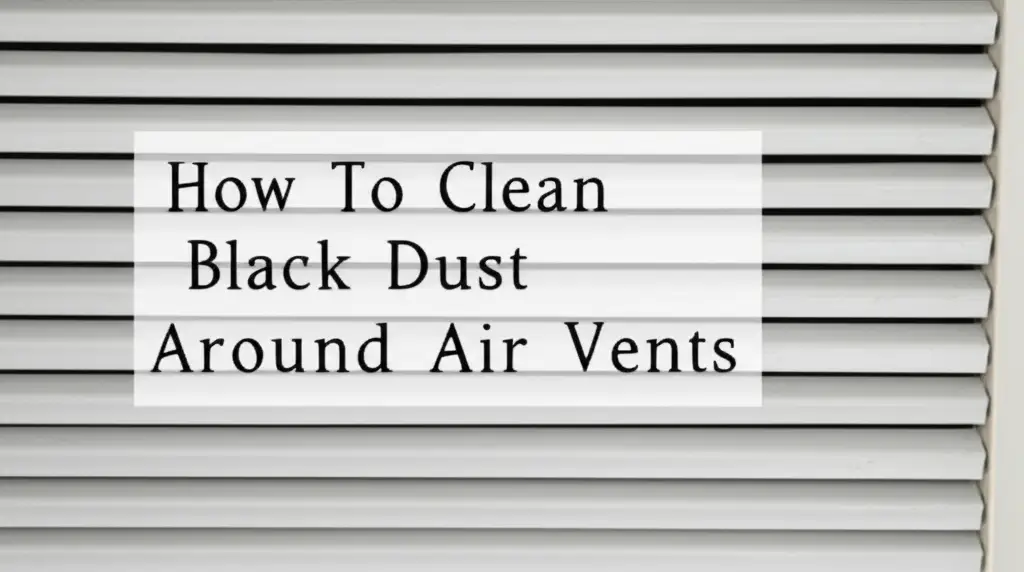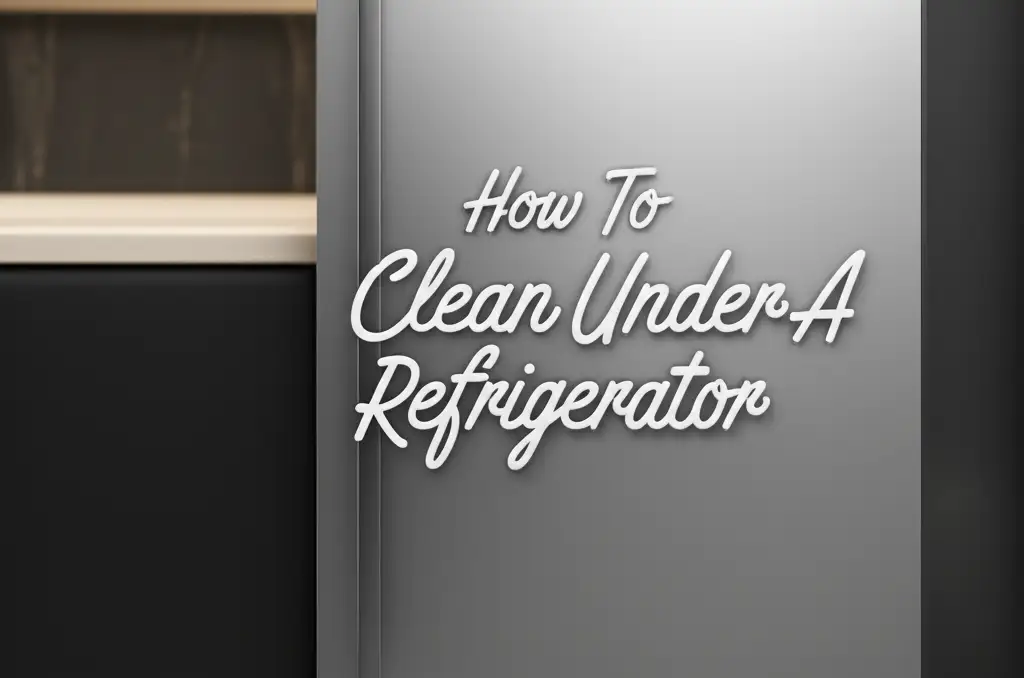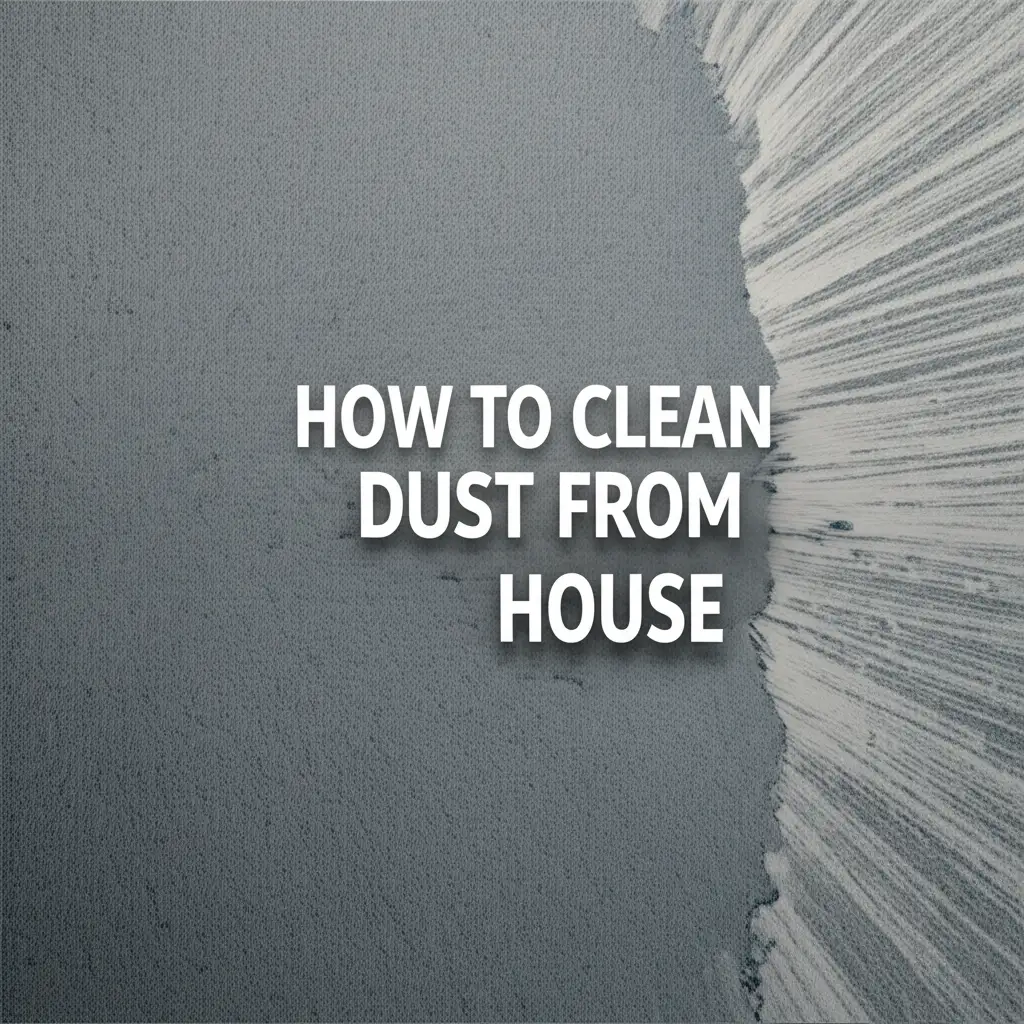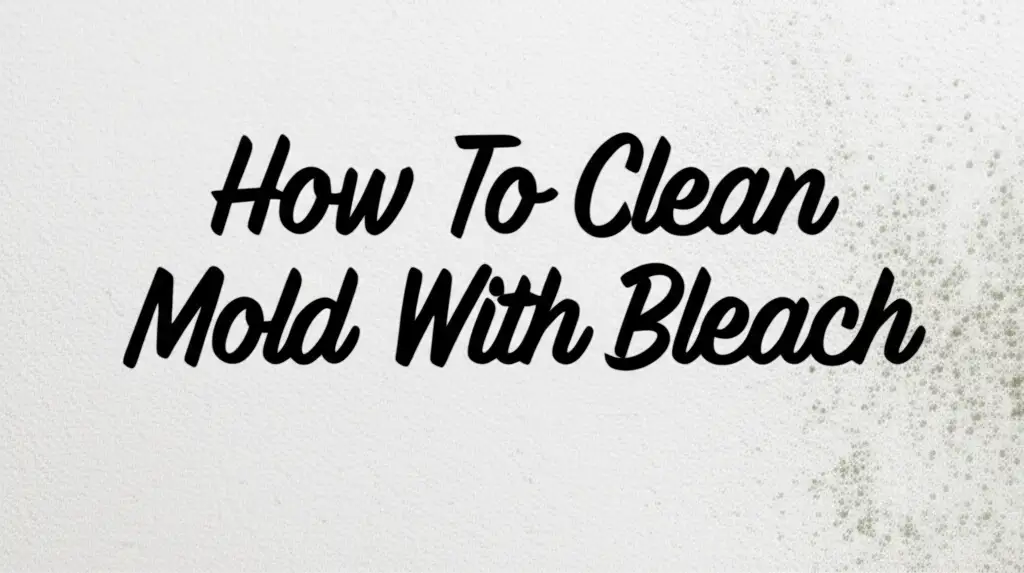· Home Cleaning · 16 min read
How To Clean Black Dust Around Air Vents

Effective Ways to Clean Black Dust Around Air Vents
Have you noticed unsightly black dust appearing around your home’s air vents? This common issue mars your walls and can signal deeper problems with your home’s air quality. I know how frustrating it is to see this grime appear, especially after you have just cleaned. Tackling this dark buildup quickly is important for both your home’s appearance and the air you breathe.
In this comprehensive guide, I will show you how to clean black dust around air vents effectively. We will explore what causes this grime and the specific tools you need. I will walk you through a step-by-step cleaning process. You will also learn practical ways to prevent this dust from returning. Get ready to improve your home’s cleanliness and air quality.
Takeaway
- Identify the common causes of black dust around air vents, including dirt, lint, and potential mold.
- Gather the right cleaning tools and supplies before you start.
- Follow a simple, step-by-step process for thorough cleaning of vents and surrounding surfaces.
- Implement long-term strategies like filter changes and humidity control to prevent future buildup.
- Recognize when professional help is necessary for your HVAC system.
Black dust around air vents often signals dirt, debris, or mold growth from airflow. To clean it, use a vacuum to remove loose dust, then wipe surfaces with a damp cloth and mild cleaner. Address moisture issues and replace filters regularly to prevent its return.
Decoding Black Dust Around Vents: Causes & Impact
Many homeowners find black dust around their air vents. This dark buildup often indicates dirt, lint, or pet dander. These particles settle on walls as air flows from your heating, ventilation, and air conditioning (HVAC) system. Sometimes, the dust comes from candles, fireplaces, or even cooking fumes. These sources create fine soot particles that travel through the air.
However, black dust can also be a sign of moisture issues. Mold and mildew can grow in damp environments within your ductwork. When air blows out, mold spores attach to dust particles and settle around the vents. This type of black residue usually has a musty odor. It can also spread quickly if not addressed. Understanding the source helps you clean effectively and prevent future problems.
This black dust affects more than just your walls. It indicates poor indoor air quality. Breathing air filled with dust, allergens, or mold spores can trigger allergies. It can also worsen respiratory conditions. Children and people with asthma are especially sensitive. My goal is always to create a healthier home environment. Cleaning these vents improves air quality. It also ensures your HVAC system runs efficiently. A dirty system works harder, costing you more money.
I always recommend checking for moisture if the black dust persists. Dampness is a breeding ground for mold. Look for any leaks near the vents or within the walls. A moisture meter can help confirm suspicions. If you find significant mold, you may need to consult a professional. This step is crucial for both effective cleaning and your family’s health.
Essential Tools for Cleaning Air Vent Dust
Before you start cleaning, gather all your supplies. Having everything ready saves time and makes the process smooth. I always prepare my cleaning arsenal beforehand. This preparation ensures I can tackle the job without interruptions. You probably have most of these items already at home.
You will need a vacuum cleaner with a brush attachment. This tool removes loose dust and debris effectively. Microfiber cloths are great for wiping surfaces. They trap dust well and leave no streaks. A mild all-purpose cleaner works for most surfaces. For stubborn grime or mold, you may need a stronger solution. I often use a mix of warm water and dish soap, or white vinegar.
Here is a list of items I recommend for cleaning black dust around air vents:
- Vacuum cleaner with brush attachment: Essential for initial dust removal.
- Microfiber cloths: For wiping down surfaces and vents.
- Mild all-purpose cleaner: For general cleaning of dust and grime.
- Bucket of warm water: For rinsing cloths or mixing cleaning solutions.
- Small scrub brush or old toothbrush: To reach tight spots or scrub stubborn areas.
- Screwdriver: If you need to remove vent grilles for deeper cleaning.
- Protective gloves and a dust mask: To protect your hands and lungs from dust and cleaning solutions.
- Drop cloth or old towels: To protect the floor or furniture below the vent.
For tough stains or suspected mold, consider a dedicated mold cleaner. A solution of bleach and water (1 part bleach to 10 parts water) also works. Always test any cleaner in an inconspicuous spot first. This step ensures it does not damage your walls or vent material. Proper tools make the job easier and results better.
Step-by-Step: Deep Cleaning Black Dust Around Air Vents
Cleaning black dust around air vents is a straightforward process. I find breaking it into steps makes it manageable. Follow these instructions for a thorough clean. You will see a noticeable difference quickly.
Preparation and Safety First
Safety is always my top priority. First, turn off your HVAC system. Locate your thermostat and switch the system to “off.” This prevents air from blowing out while you clean. It also protects you from moving parts inside the vents. Next, lay down a drop cloth or old towels on the floor. This catches any falling dust or drips from cleaning solutions. Put on your protective gloves and a dust mask. These items shield your hands from cleaners and your lungs from airborne dust particles.
Removing Loose Debris
Start by tackling the loose dust. Use your vacuum cleaner with the brush attachment. Carefully vacuum the vent grilles. Get into all the slats and crevices. Extend your vacuuming to the wall area immediately surrounding the vent. Many times, the black dust is simply accumulated airborne particles. Removing this initial layer makes deep cleaning much easier. Do not forget to vacuum the ceiling if the vent is overhead.
Deep Cleaning the Vents and Grilles
For a deeper clean, remove the vent grilles if they are easily detachable. Most grilles have screws holding them in place. Use a screwdriver to carefully remove these screws. Take the grilles to a sink or outdoors. Wash them with warm, soapy water and a scrub brush. For stubborn black grime, use a dedicated cleaner. I find that a solution of white vinegar and water (50/50 mix) works wonders for mild mold or mildew. Scrub until clean, then rinse thoroughly with clean water. Make sure the grilles are completely dry before putting them back. Drying prevents new moisture issues.
Cleaning Surrounding Surfaces
While the grilles dry, focus on the wall and ceiling areas around the vent opening. Dip a clean microfiber cloth into your mild cleaning solution. Wring out excess liquid. You want the cloth damp, not dripping. Gently wipe the discolored areas. For painted walls, wipe softly to avoid removing paint. For tougher stains, you might need to apply a bit more pressure or use a slightly stronger cleaner. Always wipe in small sections. Rinse your cloth frequently in clean water.
Reinstallation and Final Checks
Once the vent grilles are completely dry, reattach them. Carefully align the screws with the holes. Tighten them just enough to secure the grille firmly. Avoid overtightening, which can damage the wall or vent. Finally, turn your HVAC system back on. Stand back and admire your clean, refreshed space. This thorough cleaning process greatly improves the appearance around your air vents. It also helps maintain a cleaner home.
Tackling Stubborn Black Stains and Suspected Mold
Sometimes, the black dust around your air vents is more than just dirt. It can be a stubborn stain that does not wipe away easily. This type of stain often suggests mold or mildew growth. Mold typically appears as black, greenish, or gray spots. It can have a fuzzy or slimy texture. It also carries a distinct musty odor. If you suspect mold, taking extra precautions is important. I always approach mold with caution.
For small areas of suspected mold, you can try specific cleaning solutions. A mixture of 1 part bleach to 10 parts water is effective for non-porous surfaces. Apply it with a spray bottle or a damp cloth. Let it sit for 10-15 minutes before scrubbing. Hydrogen peroxide (3% solution) is another option, especially if you prefer a non-bleach alternative. Spray it directly on the mold and let it sit for a while before wiping. Remember to wear gloves, eye protection, and a mask to avoid contact with mold spores. You can find more information on handling mold on surfaces similar to this, for example: How To Clean Mold From Window Air Conditioner.
Stubborn black stains that are not mold might be from soot or other deep-seated grime. For these, a magic eraser can work wonders on painted walls. Test it in an inconspicuous spot first. Some stains might require a stronger degreaser or specialized cleaner. Always follow the product instructions carefully. Ensure good ventilation when using stronger chemicals. If you are dealing with a different kind of persistent black residue, like the kind you find in a fireplace, the cleaning methods can sometimes be similar. For example, How To Clean Black Soot From Inside Fireplace offers insights into cleaning very dark, sticky deposits.
If the mold covers a large area, or if it keeps returning, you may have a bigger problem. Extensive mold growth often indicates a hidden moisture source within your walls or ductwork. In such cases, professional help is necessary. Mold can cause significant health issues if not handled correctly. A professional cleaner or mold remediation specialist can assess the situation. They can also ensure safe and complete removal. Never hesitate to call experts when faced with a persistent or widespread mold problem.
Long-Term Strategies to Prevent Black Dust Buildup
Cleaning black dust around air vents is a great start. Preventing it from coming back is even better. I focus on long-term solutions to keep my home cleaner. These strategies save you time and effort in the future. They also improve your overall indoor air quality.
First, regular dusting and vacuuming are crucial. Dust and pet dander are major contributors to black buildup. Make it a habit to dust your home weekly. Use a vacuum with a HEPA filter to capture fine particles. Pay special attention to areas near air vents. This simple routine significantly reduces airborne dust. It also minimizes what settles on your walls.
Second, maintaining your HVAC system is key. Your air filter is the front line of defense against dust. Change your HVAC filter every 1-3 months. The frequency depends on your home’s activity and pet ownership. A clogged filter cannot trap dust effectively. This allows more particles to circulate and settle around vents. A higher MERV rating filter traps smaller particles. This can reduce black dust. Regular cleaning of system components also helps. For general filter maintenance, consider insights from How To Clean Air Filter On Lawn Mower, as some principles of filter care are universal.
Third, control indoor humidity levels. High humidity encourages mold growth. This mold can contribute to black dust around vents. Aim for a humidity level between 30% and 50%. Use a dehumidifier in damp areas like basements or during humid seasons. Ensure proper ventilation in bathrooms and kitchens. This removes moisture produced by showers and cooking. Good ventilation prevents mold formation.
Consider professional duct cleaning if you have persistent issues. Over time, dust, debris, and allergens build up inside your ductwork. This accumulation can be a source of constant black dust. Professionals use specialized equipment to clean the ducts thoroughly. This service is not always necessary yearly. However, it can be beneficial every 3-5 years, especially if you have pets or allergies. Sealing air leaks around windows and doors also helps. It prevents outside pollutants from entering your home.
Beyond Vents: Ensuring Your Home’s Air Quality
Cleaning the black dust around your air vents is an important step. However, ensuring good air quality extends beyond just the vents. I believe a holistic approach leads to the healthiest home environment. Many factors influence the air you breathe daily. Addressing these factors complements your vent cleaning efforts.
Consider investing in air purifiers. These devices filter the air in specific rooms. They capture fine particles, allergens, and even some odors. Place them in high-traffic areas or bedrooms. Look for models with HEPA filters. These filters are highly effective at trapping tiny airborne contaminants. Air purifiers add an extra layer of protection. They help keep the air clean between your regular deep cleaning sessions.
Proper ventilation is also crucial. Open windows regularly, even for a few minutes each day. This fresh air exchange flushes out stale air and indoor pollutants. Use exhaust fans in bathrooms and kitchens. These fans remove moisture and cooking fumes. They prevent the buildup of humidity and odors. Good airflow throughout your home reduces dust and improves overall air freshness.
Think about the products you use inside your home. Many cleaning supplies, paints, and air fresheners release volatile organic compounds (VOCs). These chemicals can degrade indoor air quality. Opt for low-VOC products whenever possible. Choose natural cleaning solutions like vinegar and baking soda. This reduces the chemical load in your air. For example, learning How To Clean With Vinegar And Baking Soda can help you create safer cleaning habits.
Finally, regular deep cleaning of your entire home impacts air quality. Dust settles everywhere, not just near vents. Vacuum carpets and rugs regularly. Clean curtains and upholstery, as they trap dust. Keeping your living space tidy reduces the amount of airborne particles. A clean home naturally has cleaner air. This comprehensive approach creates a healthier and more comfortable living space for you and your family.
When to Call a Professional for Vent and Duct Cleaning
You have done your best to clean the black dust. You have also implemented preventive measures. Still, sometimes the problem persists. This is when I consider calling in the experts. Professional help can save you time and ensure a thorough job. It also addresses issues you might not see or cannot reach.
One clear sign to call a professional is persistent mold growth. If mold keeps reappearing after you clean it, a larger issue exists. This issue might be hidden moisture in your walls or ductwork. Professionals have specialized tools to detect and safely remove mold. They can identify the source of the moisture. This prevents future mold problems from taking hold. Trying to tackle extensive mold yourself can be risky for your health.
Another reason is widespread black dust throughout your home. If every vent has significant black buildup, your entire duct system might be dirty. Over years, dust, pet dander, and debris accumulate inside air ducts. A professional duct cleaning service uses powerful vacuums and brushes. They clean the entire length of your ductwork. This removes years of accumulated grime. This service can significantly improve your home’s air quality.
Consider a professional if you or your family members experience ongoing respiratory issues. Frequent allergies, asthma flare-ups, or unexplained coughing can point to poor indoor air quality. Dirty ducts can harbor allergens and irritants. A professional cleaning can remove these culprits. This step can often bring noticeable relief to those with sensitivities.
Finally, if your HVAC system is very old, a professional inspection is wise. Older systems can accumulate more dirt. They might also have seals or insulation breaking down. This allows more dust to circulate. A professional can assess the overall health of your HVAC system. They can also recommend solutions beyond just cleaning. This might include sealing ducts or upgrading components. Knowing when to call in the experts ensures your home remains a clean and healthy environment.
FAQ Section
Is black dust around vents dangerous?
Black dust around vents is not usually dangerous in itself. It is mostly dirt, lint, or pet dander. However, it can worsen allergies or respiratory issues for sensitive individuals. If the dust is mold, it can pose health risks, especially to those with compromised immune systems. Always address its presence promptly.
How often should I clean my air vents?
You should clean the grilles of your air vents every 1-3 months during your regular cleaning routine. This prevents surface buildup. A more thorough cleaning, including removing and washing grilles, should happen every 6-12 months. This keeps deeper grime from accumulating.
Can black dust indicate mold?
Yes, black dust around vents can indicate mold. If the black residue has a musty odor or appears fuzzy, it is likely mold. Mold grows in damp areas within your ductwork. It then spreads its spores through the airflow. Address suspected mold quickly to prevent its spread and health risks.
Why do only some vents have black dust?
Some vents might have more black dust due to several factors. These include proximity to sources of dust like carpets or pet areas. They could also be in high-traffic zones. Additionally, airflow patterns or slight leaks in specific duct sections can direct more dust to certain vents.
Should I hire a professional for vent cleaning?
Consider hiring a professional if you see widespread mold. Also, if you have significant, persistent black dust throughout your home. If family members experience ongoing allergy or respiratory problems, a professional duct cleaning can help. Experts have tools to deep clean and address hidden issues.
What type of filter prevents black dust?
Using an HVAC filter with a higher MERV (Minimum Efficiency Reporting Value) rating can help prevent black dust. Filters with MERV 8-11 effectively trap smaller particles like dust, pollen, and pet dander. Higher MERV ratings (12+) capture even finer particles but may restrict airflow, so check your system’s compatibility.
Conclusion
Seeing black dust around your air vents can be concerning. It signals issues with your home’s cleanliness and potentially your air quality. As we have explored, understanding its causes is the first step. You now have the knowledge and tools to tackle this common problem directly. My aim is always to empower you to create a cleaner, healthier living space.
You have learned how to gather the right supplies. You also have a clear, step-by-step guide for deep cleaning these dusty areas. We discussed how to address stubborn stains and identify potential mold issues. Crucially, we covered long-term strategies for prevention. Regular maintenance, proper filtration, and humidity control are your allies. Taking these steps not only restores the look of your walls but also significantly improves your indoor air quality. By committing to regularly cleaning black dust around air vents, you protect your home and your family’s health. Take action today for a fresher, cleaner home tomorrow.
- black dust
- air vent cleaning
- HVAC maintenance
- indoor air quality
- dust removal
- mold prevention
- home cleaning




